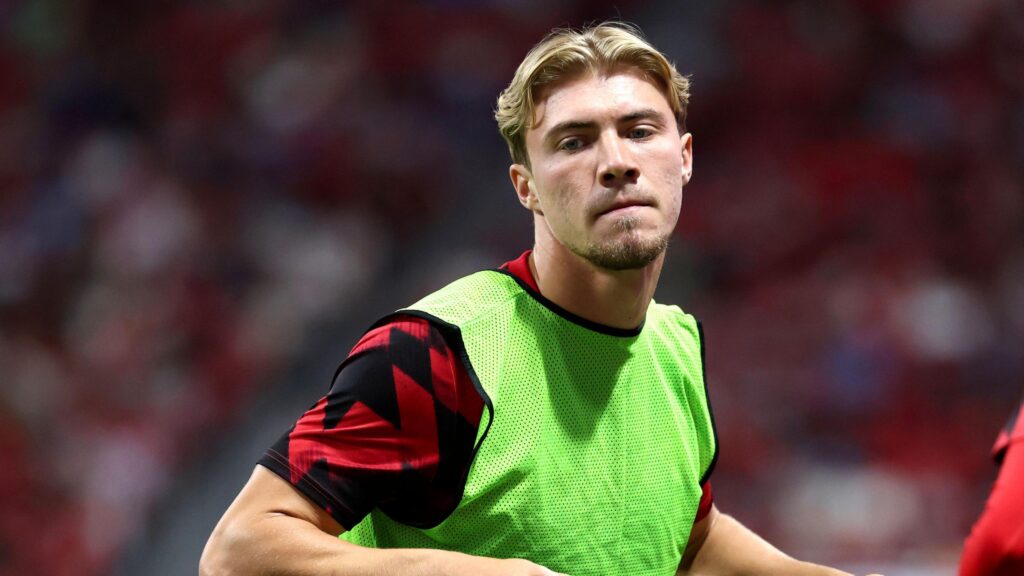On August 17, 2025, Manchester United announced that their striker Rasmus Hojlund would not be part of the squad for the Premier League opener against Arsenal at Old Trafford. This decision, made by coach Ruben Amorim, has stirred considerable discussion among fans and analysts alike. The exclusion of Hojlund from this critical match ignites speculation surrounding his future with the club. Notably, this also reflects a broader strategy shift in United’s attacking lineup.
### Context of the Decision
Rasmus Hojlund has become a pivotal figure since arriving at Manchester United for £72 million from Atalanta two years ago, where he made a substantial impact in the last season, netting 10 goals in 52 appearances. His earlier performances had established him as United’s primary striker. However, with the recent signing of Benjamin Sesko from RB Leipzig for a hefty £73.7 million, competition for starting roles has intensified. As a result, Hojlund’s prospects for regular playtime appear significantly diminished.
Amorim had already opted to keep Hojlund on the bench during the final pre-season friendly against Fiorentina earlier this month, despite Sesko’s minimal participation. Instead, Mason Mount filled what has become known as a “false nine” role, further complicating Hojlund’s position within the squad. With Mount continuing in that position for the game against Arsenal, and the likes of Sesko and Joshua Zirkzee also available but benched, the dynamics of the forward line are changing.
### Future Uncertainty
The clarity surrounding Hojlund’s immediate future remains hazy, with clubs like AC Milan reportedly showing interest in signing the young Danish international. As of now, no deal has been finalized, adding a layer of uncertainty to his status and the potential for a transfer. Hojlund himself has previously expressed a desire to stay at Manchester United, raising questions about how he will respond to the current situation in which he finds himself sidelined.
### Expansion of the Team’s Ambitions
From a broader perspective, the decision to exclude Hojlund aligns with United’s recent overhaul of their attacking strategies under Amorim. The investment of approximately £200 million into revamping the forward line underscores the ambition of the management to reshape the offense according to their tactical preferences. Bryan Mbeumo and Matheus Cunha are being positioned to occupy vital attacking roles, which signals a definitive shift in the team’s strategy moving forward.
In terms of player rotations, Mount’s usage as a false nine has been successful before, and the coaching team is exploring further options, with young talents like Kobbie Mainoo potentially playing similar roles. There is still the lingering possibility of last season’s standout Bruno Fernandes taking on that role, particularly after his impressive delivery in the previous FA Cup final.
### Emerging Talent
Manchester United has invested not just in established players but also in potential future stars. The inclusion of 17-year-old Chido Obi towards the end of the last season indicates that the coaching staff is keen on integrating younger players into the first team, albeit carefully considering their development stages in relation to starting positions on the pitch.
### Conclusion
Rasmus Hojlund’s omission from the squad against Arsenal illustrates not only personal challenges for the player but also strategic decisions being made in Manchester United’s quest for success in the Premier League. As the new season unfolds, fans will be eager to see how the new lineup performs and how Hojlund’s situation evolves amidst speculation and competition for spots.












